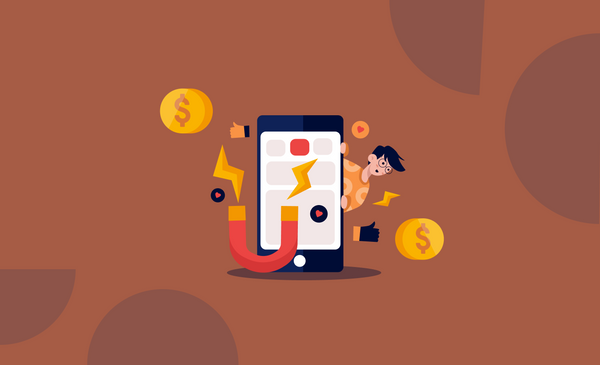Affiliate Marketing on Pinterest: A Step-by-Step Guide (2023)
With 400m+ users, Pinterest offers a great opportunity for affiliate marketers to reach their target audience and drive conversions. Learn the art of doing it.
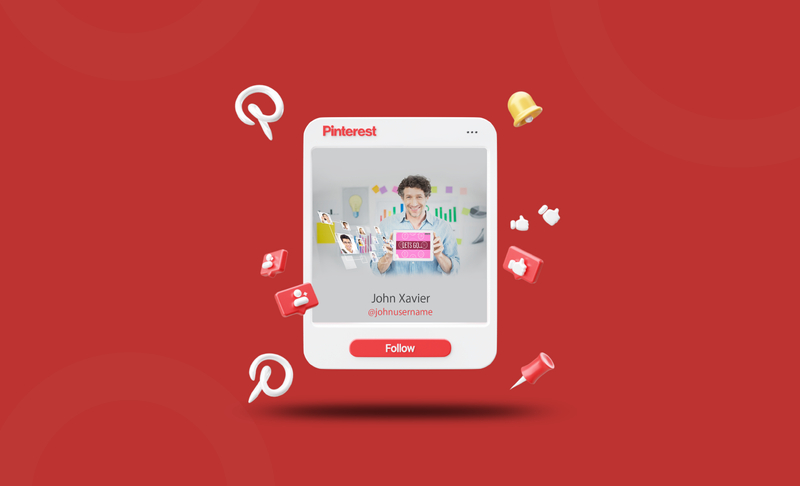
Social media platforms have been a great source of traffic for affiliate marketers. Pinterest, a relatively new entrant, is gaining traction fast for affiliate marketing. Pinterest offers affiliate marketers a vast audience to promote products and drive sales thanks to its 400 million active users. In this post, we will delve into getting started with Pinterest affiliate marketing, strategies for being a successful affiliate marketer and tips to maximize your affiliate earnings.
What makes Pinterest a good affiliate marketing platform?
Pinterest is a visual search engine that allows users to discover, save, and share ideas, inspiration, and products through images, videos, and links. For affiliate marketers, Pinterest is a great platform because of the following reasons:
- Large and engaged user base: Over 400 million monthly active users use Pinterest to find ideas, inspiration, and products to buy.
- Visual platform: With Pinterest, you can showcase products visually through eye-catching images and videos.
- Search functionality: By searching for specific keywords or phrases, users can discover products on Pinterest.
- Long-term exposure: Content on Pinterest can continue to drive traffic and sales over time, unlike other social media platforms.
- Niche-specific audience: With Pinterest, you can target specific interests, demographics, and locations to reach a niche audience.
- Sharing capabilities: The Pinterest community encourages users to share pins with their followers, allowing you to reach a wider audience and drive more traffic to your affiliate links.
Its large and engaged user base, visual nature, search functionality, long-term exposure, niche-specific audience, and sharing capabilities make Pinterest a valuable affiliate marketing platform.
Here is a step-by-step guide to preparing your Pinterest account for affiliate marketing
How do I get started with Pinterest affiliate marketing:
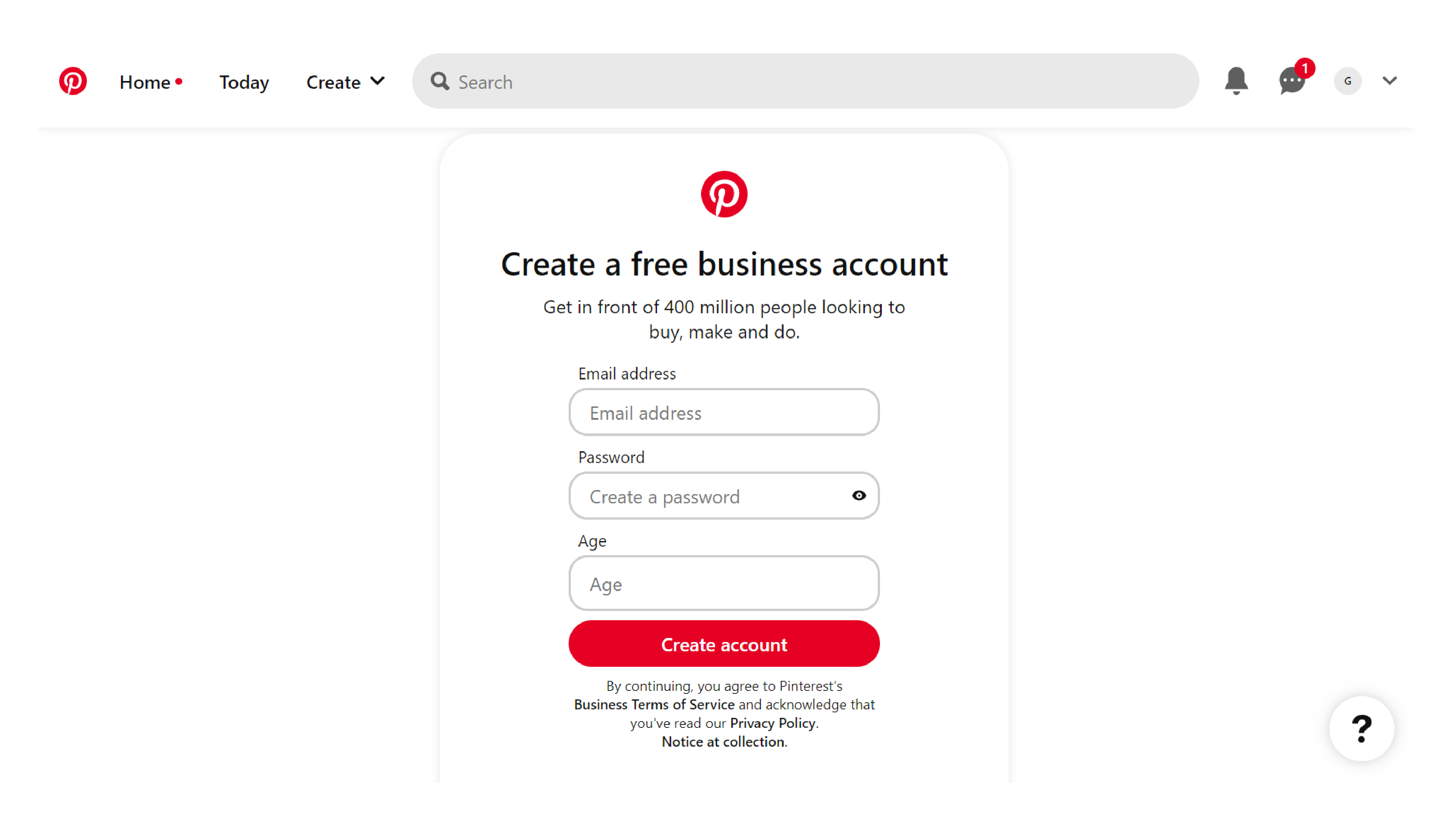
The first step is to sign up for a Pinterest business account for free. To create a free Pinterest business account, follow these steps:
- Go to Pinterest.com and click on the "Join as a business" button located at the bottom of the page.
- Enter your email address and create a password.
- Choose your business type from the drop-down menu.
- Enter your business name and website URL.
- Choose your language and country.
- Agree to the service terms and click on the "Create account" button.
- Complete your profile by adding a profile photo and description, as well as any other relevant information about your business.
Verify your website by following Pinterest instructions. This step is important as it allows you to access Pinterest Analytics, which provides valuable insights into your Pinterest performance.
The next step is to create a professional-looking profile
Ensure your profile picture is clear, high-quality, and represents your business or brand. The image could be a logo, a product image, or a headshot.
- Write a compelling bio: Create a concise bio that tells users who you are, what your business is all about, and what they can expect from your Pinterest account. Keep your tone consistent with your brand voice and use relevant keywords.
- Organize your boards:Make your boards easy to navigate and logically organized. Ensure that the titles you use for your boards are clear, descriptive, and relevant to your business.
- Use high-quality images: Keep your boards and pins visually appealing by using high-quality images. Your content will become more engaging and attractive to users if you do this.
- Add your website: Improve your credibility by adding your website to your profile. Additionally, it will give users a better understanding of your business and products. This is an optional step.
The next step is to Optimize your Pinterest boards for SEO:
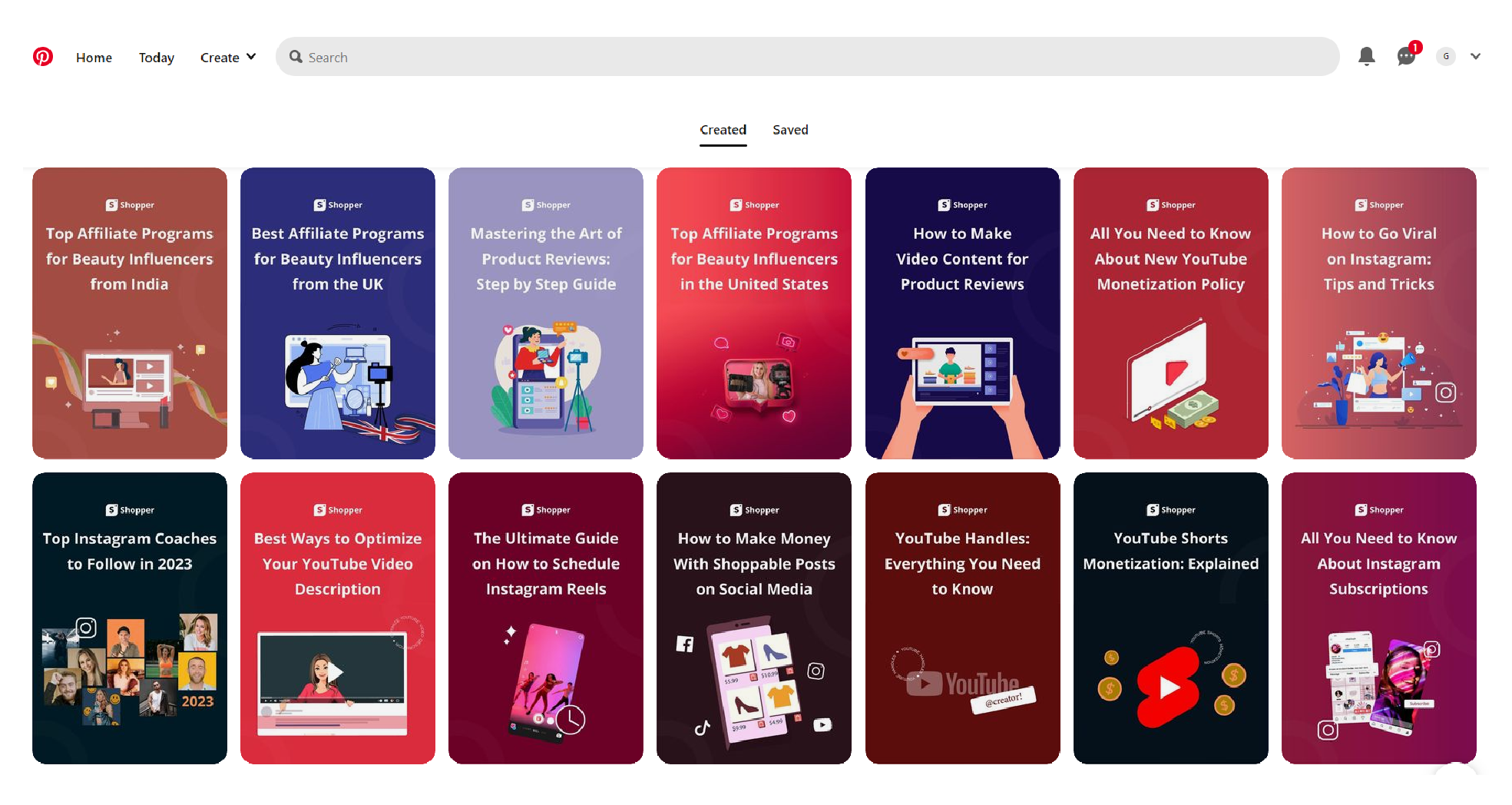
- Use descriptive board titles and board descriptions:
- Make your board titles descriptive and keyword-rich. Your content will be more visible to Pinterest users when they search for keywords relevant to your content. Make your board description as concise and clear as possible, and include relevant keywords. Pinterest will be able to understand your board's content and show it to the right people.
- Categorize and Organize your boards: You should categorize your boards appropriately so that Pinterest users can easily find them. This will help Pinterest understand the content of your board and show it to the right audience. Make your boards easy to navigate and logically organized. By doing this, users will be able to find the content they're looking for more easily, and they will spend more time engaging with your account.
- Use high-quality images: Keep your boards and pins visually appealing by using high-quality images. As a result, your content will be more appealing to users and will lead to increased engagement.
- Use hashtags: Make sure your pin descriptions include relevant hashtags to increase visibility. When users search for relevant keywords, they will be able to find your content more easily.
Which Pinterest account should I create for affiliate marketing?
For affiliate marketing, it is important to have a Pinterest business account. Business account. Business accounts on Pinterest come with additional features and analytics, such as Pinterest Analytics, Rich Pins, and the ability to promote Pins.
Which types of pins are suitable for affiliate marketing?
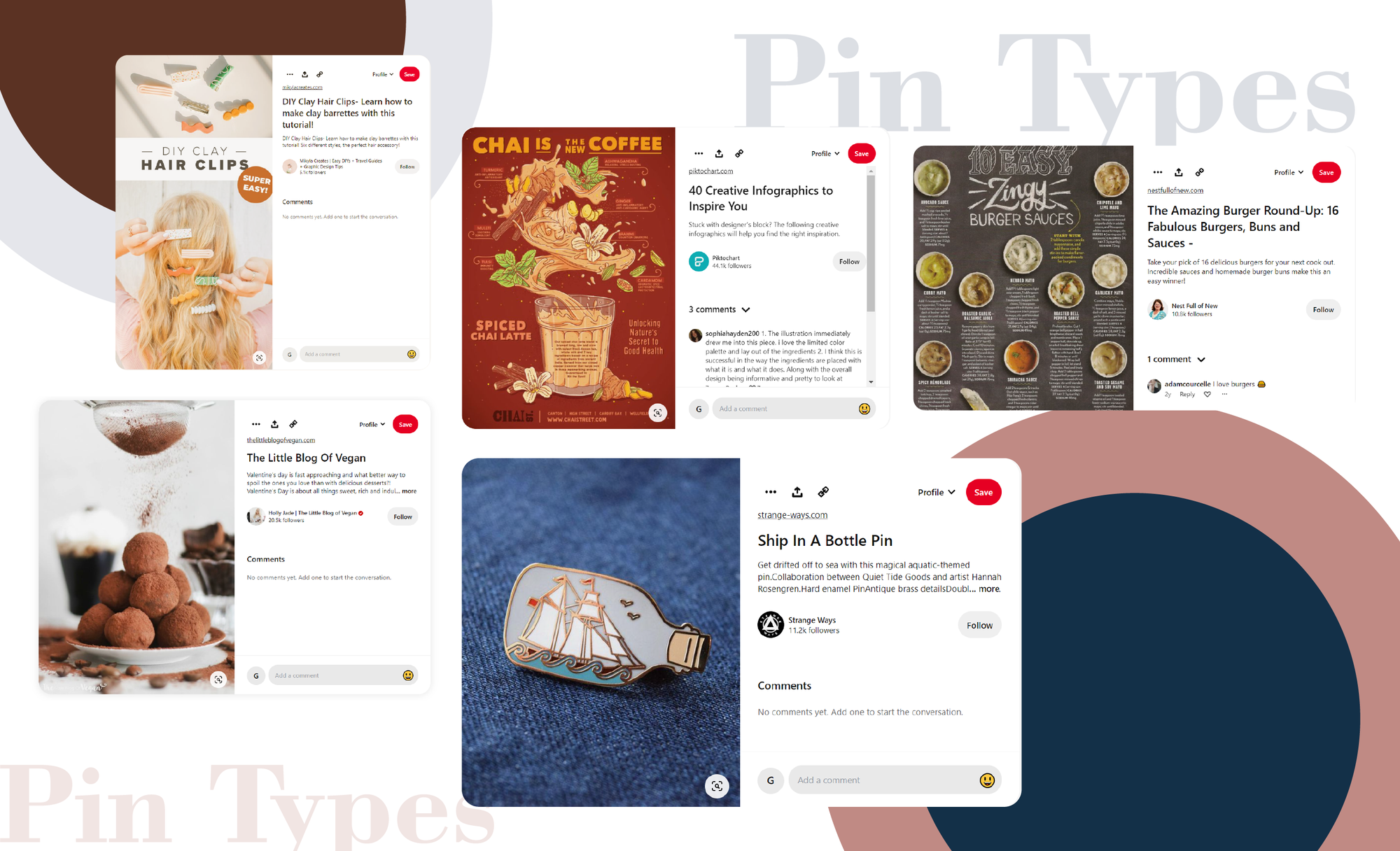
You can start creating Pins once your account has been set up according to the guidelines. Several types of Pinterest pins are available for promoting your business or products. The following types are most popular that can be used for affilaite marketing are
- Product Pins: There are specific pins that feature specific products with pricing, availability, and other information.
- Recipe Pins: Recipes with ingredients, cooking instructions, and serving suggestions are featured on these pins.
- DIY and Tutorial Pins: Step-by-step instructions for DIY projects and tutorials on a wide range of topics can be found on these pins.
- Infographic Pins: These pins feature visually appealing infographics that provide valuable information and statistics on a particular topic.
- Round-up Pins: With these pins, you can find a collection of related products, recipes, or ideas presented in a visually appealing way.
Event Pins: These pins promote upcoming events, such as webinars, conferences, or product launches.
If you've decided which type of Pins you'd like to showcase, you can start adding affiliate links to them.
How do I add affiliate links to my Pinterest pins?
To add affiliate links to your Pinterest pins, follow these steps:
- To create a new Affiliate pin, sign in to your Pinterest account and click the plus icon in the top-right corner.
- Include relevant keywords in the title and description of your pin and upload an image or video.
- Add your affiliate link for the product or service you are promoting in the website field.
- You can save your pin by selecting the board and clicking the "Publish" button.
- It is important to disclose that your pin includes affiliate links by adding "#affiliate" or "Affiliate link" in the pin description or by creating a separate disclosure statement.
How to make money with Pinterest affiliate marketing?
Now it's time to find affiliate products to promote!
To find the right products, you need to consider who your audience is, who the Pinterest audience is, popular Pinterest topics, trends, and keywords, and things users will actually find useful or want to purchase.
It's also helpful to note how well-known the brand is and how high the affiliate commission is when searching for affiliate programs. Typically, digital products have very high commission rates (up to 15 to 100%).
While Amazon affiliate links can be used on Idea Pins, you may need to double-check their terms and conditions depending on where you live to see if you can use them on Standard and Video Pins.
Guidelines and rules for Pinterest affiliates
You must follow certain rules and guidelines when using affiliate links on Pinterest. These are some of the main guidelines:
- Disclose your affiliate relationship: You must disclose your affiliate relationship with your audience by using #affiliate or #ad in your pin descriptions. We recommend not to use URL shorteners to mask your affiliate link. You need to be transparent about affiliate links.
- Provide value: Pins must provide value to the user, and should not be spammy or misleading.
- Follow legal requirements: All pins must comply with local, national, and international laws, regulations, and industry codes.
- Respect intellectual property rights: Pins must not infringe on the intellectual property rights of others, including copyright, trademark, and publicity rights.
- Don't use banned content: Certain types of content, such as adult content, hate speech, and illegal content, are not allowed on Pinterest.
- Don't use deceptive practices: Pins must not use deceptive practices, such as cloaking or bait-and-switch tactics, to drive traffic to affiliate links.
- Comply with FTC rules: If you are promoting affiliate products to a US audience, you must comply with the Federal Trade Commission's Endorsement Guidelines, which require disclosure of any material connections between endorsers and advertisers.
The Pinterest guidelines and rules are subject to change, so you need to make sure you stay up-to-date with any changes and make sure your pins comply. Here is the official Pinterest guide on affiliate marketing.
The best practices for affiliate marketing on Pinterest
When it comes to affiliate marketing on Pinterest, here are some best practices to follow:
- Be careful not to spam your audience with affiliate links or products. Instead, focus on adding value to your content by creating high-quality content.
- Don't promote products you haven't used or don't believe in: Be authentic. The audience will trust you more if they know you are authentic.
- Make sure you follow Pinterest's affiliate marketing guidelines, which include disclosing your affiliate relationship to your audience.
Keep track of your results and adjust your strategy according to your audience's preference.
Tips for Affiliate Marketing on Pinterest
To help you succeed with affiliate marketing on Pinterest, here are some tips:
- Product selection: Select products that are relevant to your niche and that will appeal to your audience.
- Eye-catching pins: Use high-quality images and make pins that will grab people's attention.
- Use keywords: Make your pin descriptions relevant to search terms to help your pins appear in search results.
Focus on providing value: Instead of just promoting products, focus on providing value to your audience by creating helpful content and resources.
Top Pinterest affiliate marketers
Pinterest has many successful affiliate marketers who have built large followings and earn significant incomes. These are some of the most famous Pinterest affiliate marketers:
- Rosemarie Groner: Founder of the Busy Budgeter blog, Rosemarie has built a following of over a million Pinterest users. Through affiliate marketing, she monetizes her blog and Pinterest account, earning over $100,000 per month.
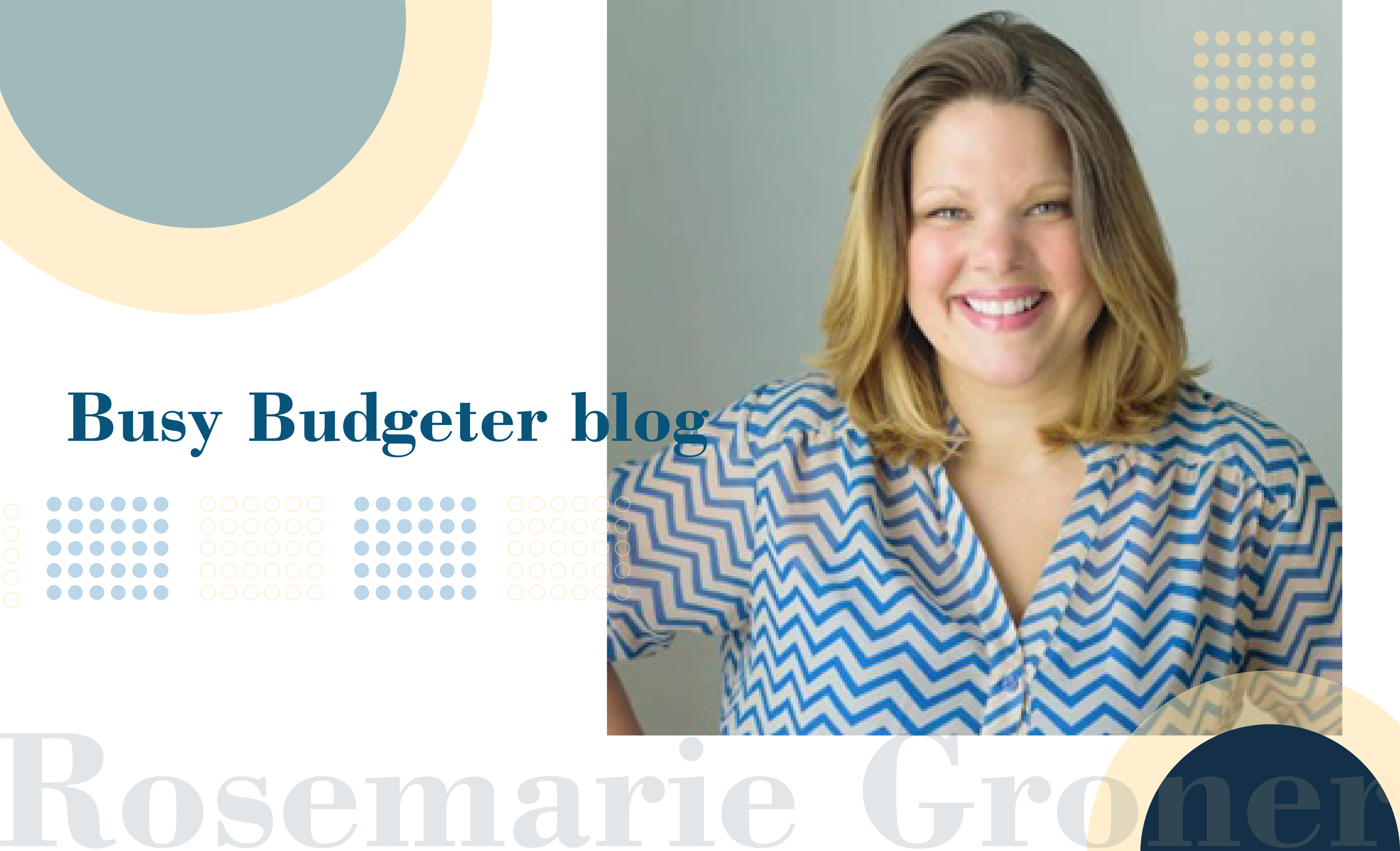
2. McKinzie Bean: She is the founder of Moms Make Cents, a blog and Pinterest account where she shares tips and strategies for making money online. Using affiliate marketing, she earns a full-time income from her following of over 600,000 Pinterest users.

3. Abby Lawson: Abby founded the blog Just a Girl and Her Blog and the Pinterest account Just a Girl and Her Blog, where she shares tips and tutorials for home decor and organization. Affiliate marketing enables her to monetize her content and earn a six-figure income.

4. Michelle Schroeder-Gardner: Michelle is the founder of Making Sense of Cents, a blog and Pinterest account where she shares tips and strategies for personal finance and online income. Through affiliate marketing, she generates a seven-figure income from her content.

Frequently Asked Questions?
How does Affiliate Marketing on Pinterest work?
Pinterest affiliate marketing involves promoting products or services from affiliate partners. You earn a commission when someone purchases something after clicking on your pin.
Getting started with affiliate marketing on Pinterest requires signing up for an affiliate program. You can find affiliate programs on Google or through affiliate networks such as ShareASale and CJ Affiliate.
You can promote products on Pinterest after signing up for an affiliate program by creating pins that feature the product and a call-to-action (CTA) to encourage buyers to make a purchase.
Are affiliate links allowed on Pinterest?
Affiliate links are allowed on Pinterest, but certain guidelines must be followed. Pinterest requires you to disclose your affiliate relationship with your audience by using #affiliate or #ad. Moreover, your pins should provide value to the user and should not be misleading or spammy. In addition, you must follow all local, national, and international laws, regulations, and industry codes.
Keep in mind that Pinterest's guidelines and rules are subject to change, so it's your responsibility as an affiliate marketer to stay on top of any changes and ensure that your pins comply. Those who fail to follow Pinterest's guidelines may have their accounts suspended or terminated.
How much money you can make from Pinterest affiliate marketing?
Affiliate marketing on Pinterest can earn you a lot of money, but it depends on a variety of factors, such as the niche you are in, your audience, and the quality of your content.
Some Pinterest affiliate marketers report earning thousands of dollars per month, while others earn only a few hundred dollars. Creating high-quality, valuable content and promoting products that align with the interests of your audience is the key to Pinterest affiliate marketing success.
Additionally, affiliate marketing takes time, effort, and patience to build a following and earn a steady income. Complying with all Pinterest guidelines and rules is also crucial to avoiding account suspension or termination.
The quality of your content, your audience, and your promotion strategies can determine how much money you earn from Pinterest affiliate marketing.
Do you need a blog to do affiliate marketing on Pinterest? Or, is it possible to do affiliate marketing on Pinterest without a website?
A blog or website can be a helpful tool for affiliate marketing on Pinterest, but it is not a requirement. Without a blog, it is possible to earn money from affiliate marketing on Pinterest using high-quality content, effective promotion strategies, and a solid understanding of Pinterest's rules.
Most successful affiliate marketers on Pinterest, however, have blogs or websites to promote their affiliate products.
With Pinterest, you can create high-quality, valuable content aimed at your target audience and start building a following. Product reviews, tutorials, and roundup posts showcasing useful products could be included in this type of content.
Conclusion
Affiliate marketing on Pinterest is a great way to earn passive income by promoting products and services. The following tips and best practices will help you build an effective Pinterest affiliate marketing strategy.


